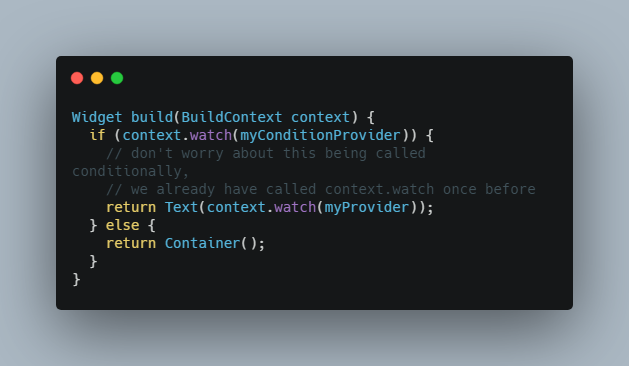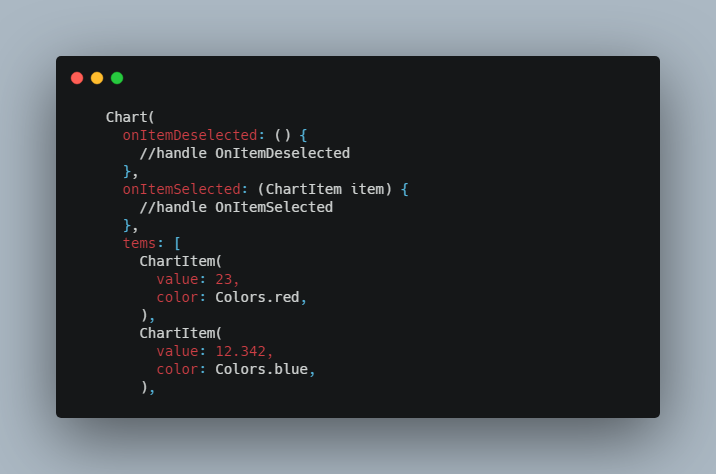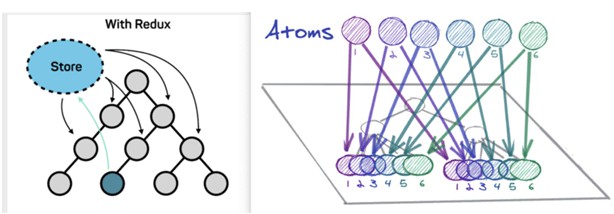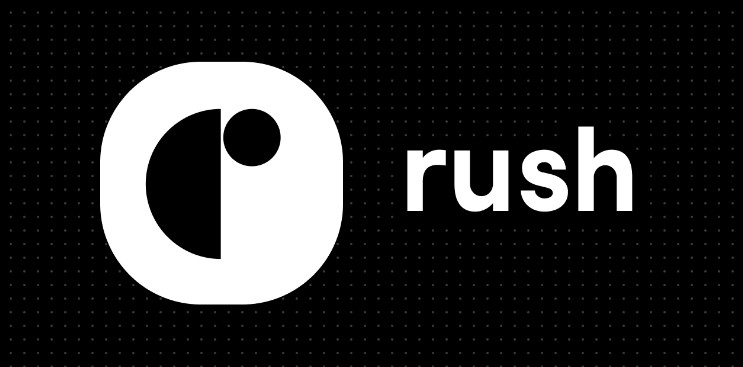This package brings back the context extensions for riverpod
that were discontinued in version 1.0.0.
- To read any provider, do
context.read(myProvider) - To watch any provider, do
context.watch(myProvider)
During the development of riverpod 1.0.0 there was a long discussion on removing the context extensions.
While being very convenient, there are good reasons why they didn’t make it into the final version.
This is no ‘official’ riverpod package. It is meant to be used alongside riverpod and offer
an alternative to the officialConsumerWidgetandConsumerStatefulWidget.
Getting Started
This assumes you already have flutter_riverpod (or hooks_riverpod) set up.
First, add riverpod_context as a dependency.
flutter pub add riverpod_context
Next, add InheritedConsumer underneath the root ProviderScope:
// Before
ProviderScope(
child: MyApp(),
)
// After
ProviderScope(
child: InheritedConsumer(
child: MyApp(),
),
)
That’s all.
Context Extensions
riverpod_context provides four convenient context extensions to interact with your providers.
context.read
context.read can be used anywhere without any special consideration.
It naturally supports any providers, provider families as well as the new .select() syntax.
Widget build(BuildContext context) {
// this won't rebuild based on 'myValue'
String myValue = context.read(myProvider);
return Text(myValue);
}
context.watch
context.watch watches the provider and triggers a rebuild of the given context when the
providers state changes. It again supports any providers, provider families as well as the
new .select() syntax.
Widget build(BuildContext context) {
// this will rebuild each time 'myValue' changes
String myValue = context.watch(myProvider);
return Text(myValue);
}
There are a few important considerations to make when using context.watch. With those, you
can also safely use any .autoDispose providers.
1. Only use inside build()
context.watch can only be used inside the build() method of a widget.
Especially interaction callbacks (like onPressed) and StatefulWidgets initState,
didChangeDependencies and other lifecycle handlers are not allowed.
2. Be cautious when conditionally watching providers
It is possible to conditionally watch providers. This is the case when context.watch may not be
called on every rebuild.
Widget build(BuildContext context) {
if (myCondition) {
return Text(context.watch(myProvider));
} else {
return Container();
}
}
In this example, when myCondition is false, context.watch is not called. This leads to an issue
where the dependencies of the provider are not clearly defined.
It is important to make sure that this does not happen, since it can lead to leaking memory and wrong
behavior!
This is also the main reason why this didn’t make it into riverpod 1.0.0. There are of
course ways to prevent this, but it is in the responsibility of the user to do so and
therefore not compile safe.
Preventing this is however pretty simple.
If there exists another context.watch on the same context, this issue is resolved. Generally speaking,
it requires at least one context.watch call on every build to be safe.
If in the example above, the myCondition actually comes from another context.watch call, you are safe.
Widget build(BuildContext context) {
if (context.watch(myConditionProvider)) {
// don't worry about this being called conditionally,
// we already have called context.watch once before
return Text(context.watch(myProvider));
} else {
return Container();
}
}
If there is (under certain conditions) no context.watch call, you have to “prime” the context
for the missing provider. This can be done using a simple context.prime().
In the example above, this can be done either in the else, or always at the beginning. It also has
no effect to do it multiple times.
Widget build(BuildContext context) {
context.prime(); // option 1: always prime
if (myCondition) {
return Text(context.watch(myProvider));
} else {
context.prime(); // option 2: prime to account for missing context.watch call
return Container();
}
}
To recap just remember this:
Wherever you use context.watch conditionally, make sure to either have another unconditional context.watch or use context.prime on the same context.
Or in other words:
You are safe if on each rebuild there always is at least one call to either context.watch or context.prime.
context.refresh
context.refresh refreshes any provider.
Widget build(BuildContext context) {
return TextButton(
onPressed: () {
context.refresh(myProvider);
},
child: const Text('Refresh'),
);
}
context.listen
Listens to a provider without triggering a rebuild.
Coming soon.




